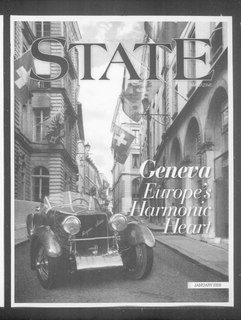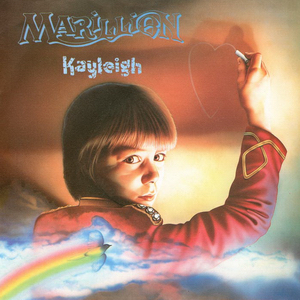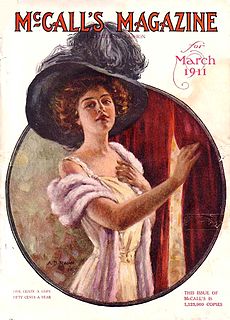
A magazine is a periodical publication which is printed in gloss-coated and matte paper or electronically published. Magazines are generally published on a regular schedule and contain a variety of content. They are generally financed by advertising, by a purchase price, by prepaid subscriptions, or a combination of the three.

Ixchel or Ix Chel is the 16th-century name of the aged jaguar goddess of midwifery and medicine in ancient Maya culture. She corresponds, more or less, to Toci Yoalticitl "Our Grandmother the Nocturnal Physician", a Mayan earth goddess inhabiting the sweatbath, and is related to another Aztec goddess invoked at birth, viz. Cihuacoatl. In Taube's revised Schellhas-Zimmermann classification of codical deities, Ixchel corresponds to the Goddess O.

Godey's Lady's Book, alternatively known as Godey's Magazine and Lady's Book, was an American women's magazine that was published in Philadelphia from 1830 to 1878. It was the most widely circulated magazine in the period before the Civil War. Its circulation rose from 70,000 in the 1840s to 150,000 in 1860. In the 1860s Godey's considered itself the "queen of monthlies".
Haunani-Kay Trask is a Hawaiian nationalist, educator, political scientist, author, and professor emeritus at the University of Hawaiʻi at Mānoa. Trask is the producer of the award-winning documentary Act of War: The Overthrow of the Hawaiian Nation (1993), winning nine different awards in three different countries. Trask helped to establish the Gladys Brandt Kamakakūokalani Center for Hawaiian Studies at the University of Hawaiʻi at Mānoa. Trask authored two books, Eros and Power: The Promise of Feminist Theory (1984), and From a Native Daughter: Colonialism and Sovereignty in Hawaiʻi (1993). She also published two books of poetry, Night Is a Sharkskin Drum (1994) and Light in the Crevice Never Seen (1999). Trask co-wrote and co-produced the award-winning documentary, Act of War: The Overthrow of the Hawaiian Nation and developed an educational CD-ROM on the Hawaiian Sovereignty movement entitled Haunani-Kay Trask: We Are Not Happy Natives (2002). In March 2017, Hawaiʻi Magazine recognized her as one of the most influential women in Hawaiian history.

Eva Selina Laura Gore-Booth was an Irish poet and dramatist, and a committed suffragist, social worker and labour activist. She was born at Lissadell House, County Sligo, the younger sister of Constance Gore-Booth, later known as the Countess Markievicz.

"Kayleigh" is a song by the British neo-progressive rock band Marillion. It was released as the first single from the concept album Misplaced Childhood. It was the band's most successful single in the UK, where it peaked at number-two and stayed on the chart for a total of 14 weeks. It also became the band's most successful single worldwide, reaching the top 10 in the Republic of Ireland, Norway and France, reached no. 1 in Poland, and became the band's sole appearance on the United States Billboard Hot 100, hitting number 74 in October 1985.

McCall's was a monthly American women's magazine, published by the McCall Corporation, that enjoyed great popularity through much of the 20th century, peaking at a readership of 8.4 million in the early 1960s. It was established as a small-format magazine called The Queen in 1873. In 1897 it was renamed McCall's Magazine—The Queen of Fashion and subsequently grew in size to become a large-format glossy. It was one of the "Seven Sisters" group of women's service magazines.

The Ladder was the first nationally distributed lesbian publication in the United States. It was published monthly from 1956 to 1970, and once every other month in 1971 and 1972. It was the primary publication and method of communication for the Daughters of Bilitis (DOB), the first lesbian organization in the US. It was supported by ONE, Inc. and the Mattachine Society, with whom the DOB retained friendly relations. The name of the magazine was derived from the artwork on its first cover, simple line drawings showing figures moving towards a ladder that disappeared into the clouds.
off our backs was an American radical feminist periodical that ran from 1970 to 2008. It began publishing on February 27, 1970, with a twelve-page tabloid first issue. From 2002 the editors adapted it into a bimonthly journal.

The American Jewess (1895–1899) described itself as "the only magazine in the world devoted to the interests of Jewish women." It was the first English-language periodical targeted to American Jewish women, covering an evocative range of topics that ranged from women's place in the synagogue to whether women should ride bicycles. The magazine also served as the publicity arm for the newly founded National Council of Jewish Women. The American Jewess was a periodical “published in Chicago and New York between 1895 and 1899” in order to represent the ideas that were important to the American Jewish community during this time. This magazine, though it is not widely remembered in modern society, “was the first Jewish women's journal edited by women that were independent of any organizational or religious ties,” along with the “first English-language journal independently edited by women.”. During the magazines “four years of publication, The American Jewess presented items on contemporary politics, literary figures, aesthetic issues, and… practical matters” along with “book reviews and a children's department." In all of its publications, the magazine engrained its contents with “a Jewish political agenda as well as a feminist agenda,” both of which were often combined “to produce both a strongly Zionist and an early feminist publication." During its time in publication, the magazine published 46 issues throughout four and a half years, producing a circulation totaling approximately 31,000.
Sinister Wisdom is an American lesbian literary, theory, and art journal published quarterly in Berkeley, California. Started in 1976 by Catherine Nicholson and Harriet Ellenberger (Desmoines) in Charlotte, North Carolina, it is the longest operating lesbian journal to date with 105 publications. Each journal covers a variety of topics pertaining to the lesbian experience and contains a combination of creative writing, poetry, literary criticism, feminist theory, ads, and notes from the editor(s). Sinister Wisdom accepts submissions from novice to accredited writers and has featured the works of writers and artists such as Audre Lorde and Adrienne Rich. The journal has been a pioneer in female publishing, working with female operated publishing companies such as Whole Women Press and Iowa City Women's Press. Sapphic Classics, a partnership between Sinister Wisdom and A Midsummer Night's Press, reprints classic lesbian works for contemporary audiences.

Periodical literature is a category of serial publications that appear in a new edition on a regular schedule. The most familiar example is the magazine, typically published weekly, monthly, or quarterly. Other examples of periodicals are newsletters, academic journals and yearbooks. Newspapers, often published daily or weekly, are, strictly speaking, a separate category of serial. Periodicals are most often referenced by volume and Issue. Periodicals have a set period and can be classified as popular and scholarly. Indefinite periodicals have an indefinite production cycle and have no plans to stop publishing. Periodicals use the International Standard Serial Numbers a standardized reference number. Periodicals often have a preferred and lower for postal distribution.
Nancy J. Azara is an American sculptor. Her work involves sculpture using carved, assembled and highly painted wood with gold and silver leaf and encaustic. The wood, the paint and the layers that make up the sculpture record a journey of memory, images and ideas. Azara's other art pieces involve collages, banners, prints where she continuously reshapes the elements and materials. Azara has worked and carved in wood for many years because of the presence and symbolism inherent in trees and because the metaphor of the tree is a “stand-in” for herself. This statement and representation of tree as “self” and woman is timely in a world which is losing touch with its primal essence.
Riot grrrl is an underground feminist punk movement that began during the early 1990s within the United States in Olympia, Washington and the greater Pacific Northwest. It also expanded to at least 26 other countries. Riot grrrl is a subcultural movement that combines feminism, punk music and politics. It is often associated with third-wave feminism, which is sometimes seen as having grown out of the riot grrrl movement, and has recently been seen in current fourth-wave feminist punk music. It has also been described as a genre that came out of indie rock, with the punk scene serving as an inspiration for a movement in which women could express themselves in the same way men have been doing all along.

HERESIES: A Feminist Publication on Art and Politics was a feminist journal that was produced from 1977 to 1993 by the New York-based Heresies Collective.

Kay Turner is an artist and scholar working across disciplines including performance, writing, music, exhibition curation, and public and academic folklore. She is noted for her feminist writings and performances on subjects such as women’s home altars, fairy tale witches, and historical goddess figures. She co-founded “Girls in the Nose,” a lesbian feminist rock punk band that anticipated riot grrl.
Mizrahi feminism is a movement within Israeli feminism, which seeks to extricate Mizrahi women from the binary categories of Mizrahi-Ashkenazi and men-women. Mizrahi feminism is inspired by both Black feminism and Intersectional feminism, and seeks to bring about the liberation of women and social equality through recognition of the particular place Mizrahi women hold on the social map, and all the ways it affects Mizrahi women.
Madeleine Zabriskie Doty was an American journalist, pacifist, civil libertarian, and advocate for the rights of prisoners, as well as the International Secretary for the Women's International League for Peace and Freedom.
Les Cahiers du GRIF is a French language feminist periodical founded in 1973 by Françoise Collin within the Group for feminist research and information in Brussels. It is a thematic issue journal identifying, exploring, and analyzing a particular dimension of the relationship to the world understood from the point of view of women or gender: kinship, politics, love, sexuality, knowledge, work, creation, etc. through reflections and testimonies. Issues 1 to 24 and issues 25 to 28 were published by GRIF. Issues 29 to 48 were published by Éditions Tierce. The last issue was created in 1994. From 1980 to 1982 a total of seven Bulletins des Cahiers du GRIF have been distributed.
Gibbous RISING: a feminist news collective was an American feminist periodical published in Sacramento, California during the late '70s. The magazine wrote on women's news, art, events and poetry.











